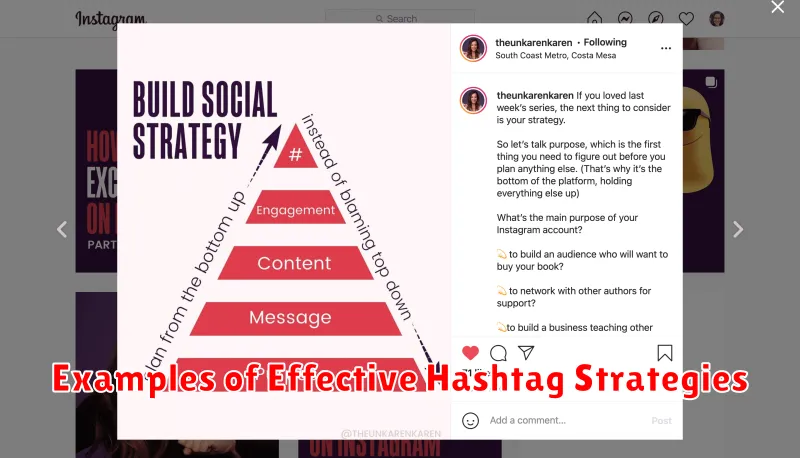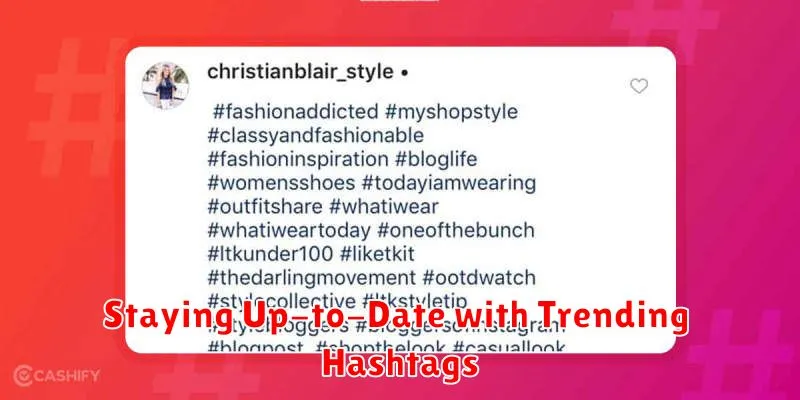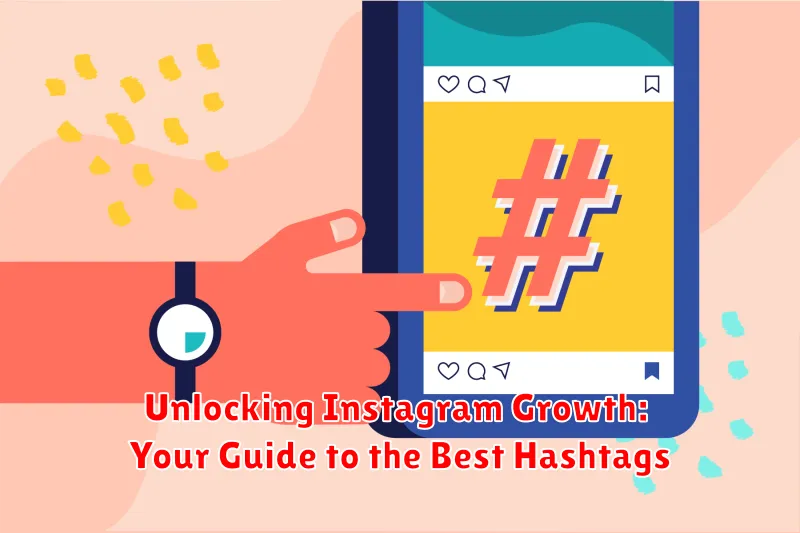Are you struggling to gain traction on Instagram? Do you feel like your content deserves more visibility? In the competitive landscape of social media, using the right hashtags is paramount to unlocking organic growth and reaching a wider audience. This guide delves into the strategic use of Instagram hashtags, providing you with actionable insights to optimize your posts for maximum impact. Learn how to identify the best hashtags for your niche, understand hashtag research techniques, and avoid common pitfalls that can hinder your Instagram growth.
Harnessing the power of relevant and effective hashtags can significantly elevate your Instagram presence. From increasing discoverability and boosting engagement to building a stronger brand identity, hashtags play a crucial role in connecting you with your target audience. This comprehensive guide will equip you with the knowledge and tools you need to master hashtag strategies, improve your content’s reach, and ultimately achieve significant Instagram growth. Discover how to leverage trending hashtags, analyze hashtag performance, and curate a winning hashtag strategy tailored to your specific goals.
Understanding the Power of Hashtags
Hashtags are more than just decorative additions to your Instagram captions. They are powerful tools that can significantly impact your reach and visibility. They act as searchable keywords, categorizing your content and making it discoverable by users interested in specific topics.
When a user searches for a hashtag, Instagram displays posts that have used that hashtag. This means that even users who don’t currently follow you can find your content if it aligns with their interests. By using relevant hashtags, you effectively expand your audience beyond your existing followers.
Strategic hashtag usage can increase engagement, drive traffic to your profile, and ultimately contribute to your overall Instagram growth. Think of hashtags as bridges connecting your content to a wider audience interested in similar themes.
Using the right hashtags is crucial. Generic, overly popular hashtags might get lost in the noise, while highly niche hashtags might not reach a large enough audience. Finding the right balance is key to maximizing your hashtag effectiveness.
Finding Your Niche Hashtags
While broad hashtags cast a wide net, niche hashtags zero in on specific communities and interests within your industry. These hashtags are crucial for connecting with a highly engaged audience genuinely interested in what you offer.
Think about the unique aspects of your business. What specific products or services do you offer? What problems do you solve for your customers? What are their interests and passions related to your brand?
For example, instead of simply using #fashion, a vintage clothing store might use #vintagefashion, #90sfashion, or #vintagedresses. This targets a specific segment of fashion enthusiasts interested in vintage pieces.
Brainstorming niche hashtags is a key step. Consider your ideal customer’s perspective. What would they search for to find your products or services? What specific terms resonate within your industry’s subcategories?
By targeting niche hashtags, you increase the likelihood of your content being discovered by users actively seeking information and products related to your offerings. This targeted approach can lead to higher engagement and conversions.
Using Hashtag Research Tools
Leveraging hashtag research tools can significantly enhance your Instagram strategy. These tools provide valuable insights into hashtag performance, popularity, and relevance, helping you make informed decisions about which hashtags to use.
Several tools are available, both free and paid, that offer a range of features. Some popular options include Hashtagify, RiteTag, and Flick. These tools often provide data on hashtag search volume, related hashtags, and competitor analysis. They can also help identify trending hashtags and assess the potential reach of specific hashtags.
Key features to look for in a hashtag research tool include:
- Hashtag popularity and reach metrics
- Related hashtag suggestions
- Competitor hashtag analysis
- Trending hashtag identification
- Performance tracking and analytics
By utilizing these tools effectively, you can gain a competitive edge and optimize your hashtag strategy for maximum impact.
Balancing Popular and Niche Hashtags
Striking the right balance between popular and niche hashtags is crucial for maximizing your reach on Instagram. Popular hashtags have a large volume of posts, offering potential for high visibility, but also high competition. Your post might get lost in the flood. Niche hashtags, on the other hand, target a specific audience interested in your content. While they have less reach, they offer a higher chance of engagement with the right users.
The ideal strategy involves a mix of both. Think of it as a pyramid. Use a few highly popular hashtags, a larger number of moderately popular ones, and the most substantial portion of your hashtags should be niche and highly targeted. This approach allows you to cast a wide net while still connecting with your ideal audience.
Experiment to find the perfect ratio for your brand. Monitor the performance of your hashtags to see which ones are driving the most engagement and adjust your strategy accordingly. A balanced approach ensures that your content reaches both a broad audience and those genuinely interested in your offerings.
Crafting a Hashtag Strategy for Your Brand
A well-defined hashtag strategy is crucial for maximizing your brand’s visibility on Instagram. This involves more than just randomly adding hashtags to your posts. It requires a strategic approach tailored to your specific brand and target audience.
Start by defining your brand pillars. What are the core values and themes associated with your brand? These pillars will guide your hashtag selection. For example, if you are a fitness apparel brand, your pillars might include fitness, wellness, active lifestyle, and motivation.
Next, create hashtag groups based on these pillars. Each group should contain a variety of hashtags, ranging from broad to specific. This diversified approach allows you to reach a wider audience while also targeting niche communities.
Consistency is key. Develop a consistent posting schedule and integrate your chosen hashtags into your captions or first comment. Regularly analyze your hashtag performance to identify which hashtags are driving the most engagement.
Best Practices for Instagram Hashtag Usage
Using hashtags effectively is crucial for maximizing your reach on Instagram. Here are some best practices to follow:
Relevance is Key
Avoid generic hashtags. Focus on using hashtags that are directly relevant to your content. A picture of a sunset in California should include hashtags like #californiasunset #sunsetphotography, not just #sunset or #picture.
Mix It Up
Don’t use the same set of hashtags for every post. Diversify your hashtag usage based on the specific content you’re sharing.
Placement Matters
While you can include hashtags in your caption, consider adding them in the first comment to keep your caption clean and focused.
Quantity vs. Quality
While Instagram allows up to 30 hashtags, focus on quality over quantity. Use a strategic mix of relevant hashtags rather than filling up all 30 slots.
Avoid Banned Hashtags
Be aware of banned or restricted hashtags. Using them can negatively impact your reach. Research regularly to ensure you’re not using any of these.
Measuring Hashtag Performance and Making Adjustments
Tracking your hashtag performance is crucial for optimizing your Instagram strategy. Instagram Insights provides valuable data for business accounts, allowing you to see how many impressions your posts received from hashtags. This data helps determine which hashtags are driving the most visibility.
Beyond Instagram Insights, consider using third-party analytics tools for a more comprehensive analysis. These tools can offer deeper insights into hashtag reach, engagement, and audience demographics.
Regularly review your hashtag performance. Don’t be afraid to experiment with different hashtag combinations and analyze the results. If certain hashtags aren’t performing well, replace them with new ones. Adaptability is key to maximizing your hashtag strategy’s effectiveness.
Key metrics to monitor include:
- Impressions: The number of times your posts have been seen.
- Reach: The number of unique accounts that have seen your posts.
- Engagement: The number of likes, comments, saves, and shares your posts receive.
By analyzing these metrics, you can refine your hashtag strategy and achieve better results over time.
Examples of Effective Hashtag Strategies

Let’s explore some practical examples of how different brands might employ effective hashtag strategies on Instagram.
Example 1: A Fitness Apparel Brand
A fitness apparel brand could utilize a mix of broad and niche hashtags. Broad hashtags like #fitness and #workout would reach a large audience, while niche hashtags such as #yogapants or #runninggear would target specific customer interests. They might also include branded hashtags like #[BrandName]Apparel.
Example 2: A Local Bakery
A local bakery would benefit from location-based hashtags like #[CityName]Bakery or #[Neighborhood]Treats. They might also use hashtags related to specific products, such as #cupcakes or #sourdoughbread, and event-related hashtags like #birthdaycake or #weddingcakes.
Example 3: A Travel Blogger
A travel blogger could use destination-based hashtags like #travelgram, #wanderlust, #[CountryName], and #[CityName]. They could also incorporate experience-based hashtags like #backpacking or #luxurytravel, and visually descriptive hashtags such as #beautifuldestinations or #travelphotography.
Staying Up-to-Date with Trending Hashtags

The Instagram landscape is constantly evolving, and so are trending hashtags. Staying current with these trends can significantly impact your reach and visibility. Regularly monitoring trending topics is essential for maximizing your organic reach.
Several methods can help you stay ahead of the curve. Explore the Explore tab on Instagram to see what hashtags are currently popular in your niche. Observe what hashtags influencers in your industry are using. Consider using social listening tools to track emerging hashtags.
Don’t jump on every trending hashtag. Relevance is key. Ensure the trending hashtag aligns with your brand and content. Using irrelevant trending hashtags can appear spammy and damage your credibility.
Be mindful of hashtag challenges. While some challenges can boost visibility, others might not align with your brand image. Carefully consider if a particular challenge is appropriate for your target audience and overall marketing strategy.

